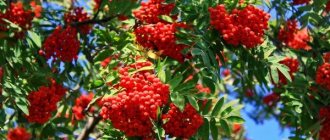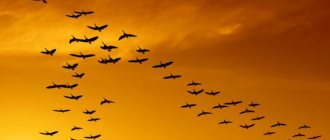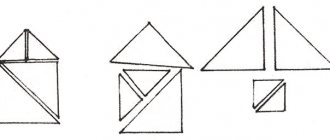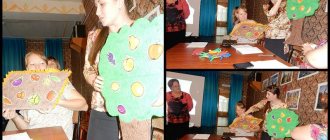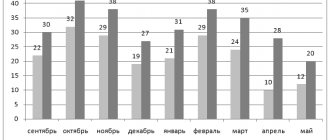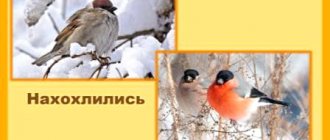- Reports and messages
- Plants
- Spruce
Spruce belongs to the pine family.
This is an evergreen tree, a symbol of the New Year. Spruce can grow up to fifty meters in height and live up to three hundred years. In the USA there is a spruce tree that is eight hundred and fifty-two years old. There are about forty-five varieties of tall spruce trees. Of these, the following can be noted: Eastern European or ordinary, Siberian, Oriental, Korean, Ayak, Tien Shan, Glen spruce, Canadian, red, Serbian, blue.
Low spruces are called dwarf. Dwarf spruces have found wide application in the field of landscape design and are often used in home and interior decoration. There are the following types of dwarf spruce trees: Push spruce, Nidiformis spruce, Nana spruce, Bialobok spruce.
The distribution area of spruce is very large. The common spruce has the largest distribution area: Western Europe, Russia and the Urals. Siberian and Ayan spruce grows in Siberia, and eastern spruce grows in the Caucasus. There are varieties of spruce that grow in certain climates: for example, only on the Kuril Islands, southern Sakhalin and the island of Hokkaido.
Spruce reproduces with the help of heterosexual cones. When the seeds ripen, the cone falls to the ground and is carried away by the wind, sometimes very far. Spruce begins to reproduce after fifteen years of growth.
Spruce is not only an ornamental plant, it is widely used in various fields. Spruce bark, wood, pine needles and cones are used.
Spruce wood is very “musical” and has the ability to “hold” sound. The speed of sound propagation in spruce is fifteen times greater than the propagation of sound in air. Previously, in Rus' they made harps from spruce, but now they make soundboards for cellos, violins and guitars. To do this, choose a tree without curls and knots. Since houses were previously built from spruce, restorers are looking for pieces of spruce in the ruins of old houses that will be used in restoration: it is believed that such spruce has acquired even greater musicality with age. They tried to replace the spruce with another tree, but they did not find a second such “musical” tree.
The second major area of spruce is wood chemical production. Cardboard, paper, cellulose are made from it, and turpentine is obtained. Tannins are obtained from the bark, which are used in industry for tanning leather and in medicine.
Essential fractions and volatile oils are isolated from the needles, which are used in the perfume industry and medicine.
Spruce is widely used in ornamental gardening and park construction. Spruce trees are often planted along roads for protection from the wind. Nuts from the cones serve as food for birds and animals.
In many countries, spruce is decorated for the New Year. In America, the Christmas tree is decorated long before Christmas. They decorate mainly with edible decorations: tangerines, sweets and red and white candies in honor of Jesus Christ.
In Germany, Christmas trees glow and shimmer. They are decorated with balls, garlands, and Santa Claus figurines.
In Finland, trees are protected, so they prefer to decorate artificial Christmas trees with homemade decorations.
In many countries, for the New Year they decorate not a Christmas tree, but other trees: in China - a tangerine or orange tree, in Mexico - a palm tree, in Africa - a baobab tree. Often in Asian countries they dress up not a tree, but a rake in order to “rakes” more wealth in the new year.
image of Eli
Since childhood, at Christmas and New Year, people have become accustomed to smelling fir branches.
Mixing with the smell of tangerines, this fragrant pine aroma was a harbinger of a miracle, gifts, new experiences and the New Year. For many centuries, Spruce has personified the symbol of a new cycle. In ancient times, remaining evergreen, Spruce was an allegory of eternal youth and immortality, longevity and fidelity.
For the same reasons, the Spruce “spruce branches” were and remain in many villages a sign of a bygone life. During the funeral procession, “spruce branches” are thrown at the feet, saying goodbye to the departed. Their age has ended, but has passed into eternity.
In Scandinavia, spruce was used for ritual bonfires. The resinous firewood gave the fire unique strength.
The emergence of the custom of decorating the Christmas tree in Germany
It has been established that the tradition of decorating the Christmas tree originates in Germany. This happens, according to researchers, in the 16th-17th centuries. It is not known for certain who first proposed decorating a spruce tree. Researchers have different opinions. Some believe that this happened in Alsace. It is known that the authorities of one of the cities ordered a forester to cut down a Christmas tree for them, and several decades later written sources report that the custom has become general.
Another legend connects the appearance of the Christmas tree with the religious reformer Martin Luther, who began installing and decorating Christmas trees in his home. The authority of the religious figure was so great that many of his compatriots soon followed his example. An engraving has survived to this day in which Martin Luther is depicted next to a decorated Christmas tree.
The new custom quickly spread in Germany, and by the middle of the 18th century it became ubiquitous. Christmas trees are decorated with flowers made of colored paper and gold foil; apples, sugar and other sweets wrapped in gold and silver paper are hung on the tree. In addition, candles begin to be lit on the holiday tree.
From Germany, the custom of the Christmas tree gradually penetrates other European countries, and soon crosses the ocean and takes hold in America.
Where does Spruce grow?
Spruce forests are found throughout Russia. These are mostly dense, dense thickets with some undergrowth.
Despite the fact that Spruce develops best in an open area, its shade-tolerant counterparts are found.
The most common type of tree is “Normal Spruce”. It is found in the European part of Russia, Finland and northern Europe. Spruce groves are found in both Siberia and the Urals.
Brothers of the Norway Spruce can be found in the Caucasus and the Far East, on the Kuril Islands and Sakhalin. Even in North America and China, certain species of this thorny, fragrant tree grow.
Growing and care
Spruce is a very beautiful tree, both because of the shape of its crown and because of its flowers. In addition, it looks majestic and elegant, the color of its leaves is a rich dark green. Therefore, every year more and more people begin to grow and care for these plants.
Spruce trees like silica and calcareous soils that are kept moist and fertile. The air environment must also be sufficiently humid. The plant can tolerate short-term frosts, but cannot grow in the Arctic with a too cold climate.
In addition to severe frosts, the tree is very sensitive to environmental pollution. For its normal development, it requires deep soils and a humid climate with short and rare droughts. When the tree is young, it is advisable for it to grow in shady places. Seeds can be planted when the soil temperature is at least 4 °C; usually the germination rate is 40%. You can also plant seedlings in open ground. To do this, you first need to grow them at home in large flower pots, which must have drainage holes in the bottom.
It is recommended to water small seedlings every day, but in small quantities. Grown seedlings can be watered abundantly once every three days. You also need to ensure that the air is constantly fresh. When transplanting seedlings into open ground, it is recommended to do the first pruning. This procedure will also need to be done a little later so that the tree grows more luxuriantly. It must be remembered that pruning should not be done when the tree is wet.
There are types of spruce trees that can grow in areas with a fairly cool climate. Regardless of the species, spruce must grow at certain altitudes relative to sea level, usually these altitudes range from 700 to 2000 meters. It is in such zones that the climate is most favorable for the healthy growth of these plants.
The soil itself should not only be deep, but also cool. When growing spruce under artificial conditions, it is necessary to constantly add a large amount of organic fertilizers to the soil. We must not forget about regular, abundant watering, since the soil for spruce must always contain a high percentage of moisture.
The main pests of spruce are mites and red spiders. You can check for their presence by taking a piece of white paper and running it under the leaves. You can also lightly hit the hand with the paper with a branch. In this case, you can see small insects on the paper. If their quantity is insignificant, then no action can be taken, otherwise it is recommended to use an appropriate acaricidal drug. Chemicals should be used as a last resort, since in addition to harmful insects, trees also contain beneficial insects.
All types of spruce are quite hardy and can adapt to different climatic conditions. Although caring for these plants does not involve the implementation of any special measures, general rules should still be followed in order for the plant to be beautiful and healthy. Therefore, it is recommended to communicate with specialists who breed these trees or sell them; they can suggest what conditions are best to create for each specific species in accordance with the climate of the region.
What does El look like?
Spruce is a tall, stately tree with a straight, strong trunk and a dense crown. The branches are arranged in a pyramid and have spiny needles. The bark of Spruce is dense and covered with scales.
The height of Spruce can reach 30 meters, while the trunk volume of many species exceeds 1.5 meters
The average lifespan of a tree is 250 – 300 years. There are centenarians up to 600 years old.
After 10–15 years of life, the tree changes its root system, getting rid of the main root. That is why in the forest you can find these wind-fallen giants with their roots turned upside down.
Botanical description [edit | edit code ]
Evergreen trees. The root system is taproot for the first 10-15 years, then superficial (the main root dies). The tree is weakly wind-resistant, often windy.
The crown is broadly conical or spire-like (pyramidal).
The branches are whorled, horizontally spread or drooping. In the first three to four years it does not produce lateral shoots.
The bark is gray to reddish-brown, thin and scaly, sometimes with resinous blisters (eg Picea engelmannii), becoming relatively thick and furrowed over time.
The leaves are needle-shaped (needles), green, short, tetrahedral, less often flat, hard and sharp, sometimes with the abaxial side facing upward, with two carinae on the upper and lower sides. Arranged spirally, singly, sitting on leaf pads. They remain on shoots for several (six or more) years. Up to one-seventh of the needles fall annually. After severe eating of the needles by some insects, for example, the nun butterfly, brush shoots appear - with very short and stiff needles, reminiscent of brushes in appearance.
Read also: Is it possible to eat the fruits of decorative quince
Gymnosperm plants. The ovules are not enclosed in the ovary; they develop on fertile (seed) scales that form cones; microsporophylls are collected in male cones, carrying two to four microsporangia with pollen on the lower surface.
Female strobili develop at the ends of branches, forming small cones, which, after pollination (by the wind), grow and become pendulous.
Male strobili form small catkins, consisting of many stamens with elongated, longitudinally opening bilocular anthers, located in the axils of the needles at the ends of the branches of the previous year. They dust in May.
The cones are oblong-cylindrical, pointed, do not crumble, and fall off whole when the seeds ripen in the first year of fertilization. Mature cones are hanging, dry, leathery or woody, up to 15 cm long, 3-4 cm in diameter. The cones consist of an axis on which numerous covering scales are located, and in their axils there are seed scales, on the upper surface of which 2 ovules usually develop , equipped with a so-called false wing. The seeds ripen in October and are dispersed by the wind. They do not lose germination for 8-10 years.
The beginning of fruiting is from 10 to 60 years (depending on growing conditions).
Lives on average up to 250-300 years (sometimes up to 600).
Pure spruce forests are very dense, dense, and dark. There is often no undergrowth in spruce forests. Spruce trees are light-loving trees and achieve their best development in full sunlight, but nevertheless, many of their species are quite shade-tolerant not only in young but also in adulthood. Young spruce of some species are even shade-loving, for example, the undergrowth of Eastern spruce.
Medicinal properties of Spruce
Fir cones, pine needles and resin are used for medicinal purposes.
The needles contain bactericidal substances, amino acids, chlorophyll, vitamins and phytoncides. Spruce needles are rich in vitamin C, the concentration of which increases in winter, therefore, since ancient times, pine “tea” has been an excellent remedy for scurvy and at the same time strengthened the entire body.
Daily consumption of 3–4 spruce needles for a month can restore immunity and increase resistance to a number of viral diseases.
Several spruce branches placed in a vase in a room can kill harmful bacteria in the room, leaving a pleasant aroma in the air.
Fir cones are rich in tannins and essential oils. They also contain copper, manganese, aluminum, and iron.
Essential oils are used in the fight against acute respiratory infections and diseases of the upper respiratory tract.
Syrup from the buds of Spruce is prescribed for microinfarctions.
A decoction of pine needles is used by inhalation to treat sore throat and sinusitis.
Spruce resin or resin has antiseptic properties and can be used in ointments to heal wounds and ulcers.
Popular message topics
- Kazan Khanate The
Kazan Khanate is a fairly large state entity, the center of which is the city of Kazan. This Khanate was formed as a result of the collapse of the great empire of the Golden Horde. - Legislation of the Russian Federation
Law is the legal norms entrenched in statehood, which are established by legislation. Legislation is an offshoot of a political party that develops and passes laws. - Lake Abrau
Lake Abrau is a natural monument. It is located near the city of Novorossiysk in the Krasnodar region. Some argue that the lake got its name from the Abkhaz language, meaning failure. The exact version
Applications of Spruce
Spruce wood is the most common material for construction and fuel. The wood is also used to make paper.
Spruce wood is very soft and straight-grained. Despite its widespread use in construction, untreated wood is short-lived and quickly rots. That is why spruce wood is treated with antiseptics and mordants.
At the same time, Spruce wood is included in many modern materials, such as fiberboard, chipboard, laminated veneer lumber and others.
The musical properties of spruce wood have been noticed for a long time, so soundboards, bodies and other parts of musical instruments are made from this fragrant wood.
Taxonomy [edit | edit code ]
Picea
A.Dietr. Fl. Berlin 1(2): 794. 1824.
syn. Veitchia Lindl. The Gardeners' Chronicle & Agricultural Gazette 1861: 265. nom. rej. against Veitchia H.Wendl., 1868 Flora Vitiensis 270. 1868. nom. cons.
Rod El
is part of the Pine family (
Pinaceae
) of the order Pine (
Pinales
) [9].
| Types [edit | edit code ] Genus Spruce , according to the Royal Botanic Gardens, Kew, includes 37 primary species and 4 hybridogenic ones [10] [11]: | ||||||
